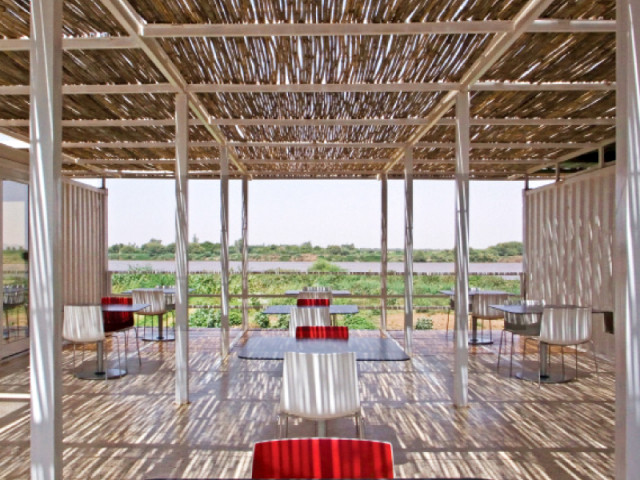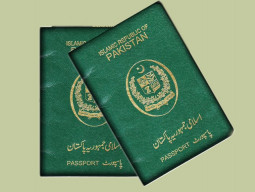
The Naqsh-e-Jahan square and blue-domed Shah Mosque of Isfahan are cool to the eye. They are examples of spectacular architecture in Muslim civilisation. We'd like to think we have inherited this built environment. But the reality of our world today is a congested, dense inner city scrabble of housing. Think of a slum in Karachi, for example.
This gives rise to a question, according to Farrokh Derakhshani, the director for the Aga Khan Award for Architecture. "Does the architecture of [a] society represent [its] reality? If there is chaos, is it in our built environment and also how we live?"
Derakhshani used this line to open his presentation on 'Buildings that Heal', at the Aga Khan University on Thursday. He was accompanied by Italian architect Raul Pantaleo of Studio Tamassociati who spoke about their work on the Salam Centre for Cardiac Surgery in Khartoum, Sudan. It was one of the five winners sharing the one-million-dollar Aga Khan Award for Architecture, 2013.
The Salam Centre can be seen as embodying the award's values by setting a new standard of excellence in "architecture, planning practices, historic preservation and landscape architecture" in a Muslim context. Studio Tamassociati built the 63-bed facility for the Italian non-profit Emergency that provides free, high quality medical and surgical treatment to the victims of war, landmines and poverty. The beauty of this structure is that it is built as a pavillion in a garden with its main buildings organised around large courtyards. "It was a big challenge because of the war," Pantaleo said.

The Salam Centre for Cardiac Surgery in Khartoum, Sudan, was one of the five winners sharing the one-million dollar Aga Khan Award for Architecture, 2013. PHOTO: COURTESY AKDN
But lessons from working in Afghanistan came in handy. And this is where Pantaleo believes that there is little mystery to creating spaces or buildings that heal. For example, as in Afghanistan, weapons had to be left out. And whether you were in the US, Italy, or Sudan, you knew people just wanted their children to have a safe place to play. The centre's ample green spaces provide that. But the crowning glory is perhaps the peace pavillion, two white rooms for prayer and meditation that appear as if they are floating on water as they are set in a pond.
"Architecture has to be based on respect," said Pantaleo. "Respect for the place." And so, instead of hiring a construction company, 200 locals were enlisted and the practice used the participatory approach. "In Italy a mistake that was made was non-participatory building," said Pantaleo. The people who use the hospital need to give input on design.
Happily, the Aga Khan award has a broad definition of architecture. Engineering is also considered for the award which is why a bridge connecting Rabat and Salé in Morocco won. And the fifth winner is an Islamic cemetery in Altach, Austria. A look over the three decades of the awards shows that skyscrapers compete with mud huts. And you don't have to be a big ticket name to be considered; master masons are honoured as well. And while the award cannot go to a historic structure, rehabilitation of one can win, as did the projects to revitalise the Birzeit Historic Centre in Birzeit, Palestine, and rehabilitation of the Tabriz Bazaar in Iran.
The Riwaq Centre for Architectural Conservation took five years to transform the decaying Birzeit. "Streets have been paved, named and clearly signed; infrastructure upgraded (water) and added to (pipes laid for a future sewer system); facades have been conserved; and public spaces have been created and rehabilitated," says the AKAA press note. The jury was happy to note that this project avoided the "museumisation" of historic spaces which can happen when people try to restore them. "The assumption is that tradition is something clinically separated from the present," noted the jury. "The object is to make it possible for a people to take ownership of their history as a living tradition."
Published in The Express Tribune, November 8th, 2014.


















COMMENTS
Comments are moderated and generally will be posted if they are on-topic and not abusive.
For more information, please see our Comments FAQ